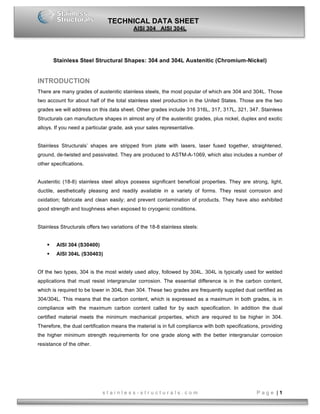The document discusses technical specifications for stainless steel alloys 304 and 304L. It provides details on:
- Chemical composition and properties of 304 and 304L, including higher carbon limits for 304.
- Applications in food processing and appliances due to corrosion resistance.
- Compliance with ASTM and ASME standards for allowable stresses.
- High strength, ductility, and resistance to corrosion and oxidation.











